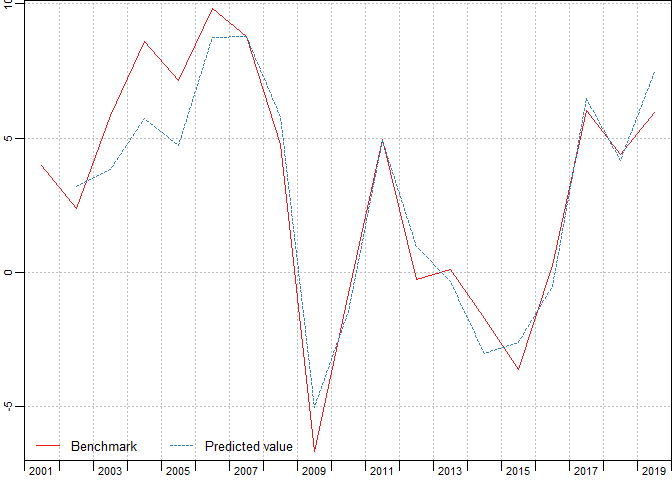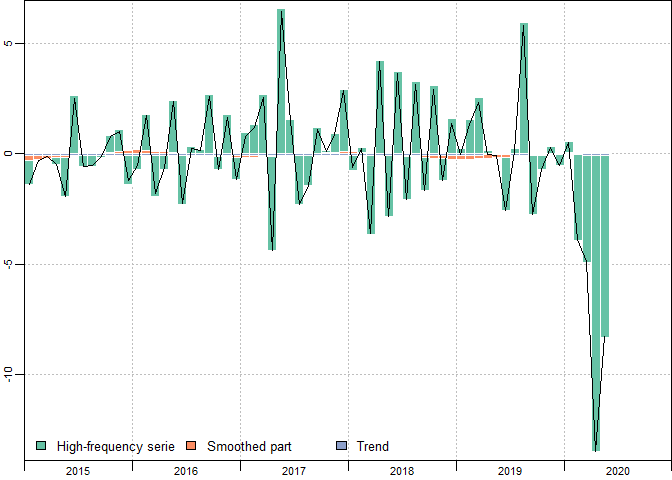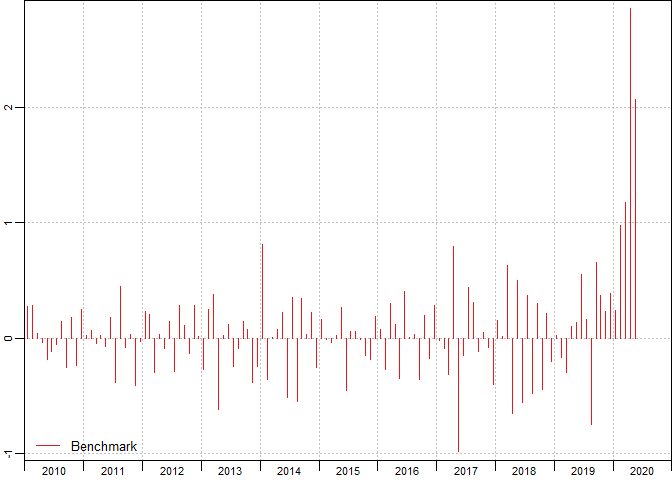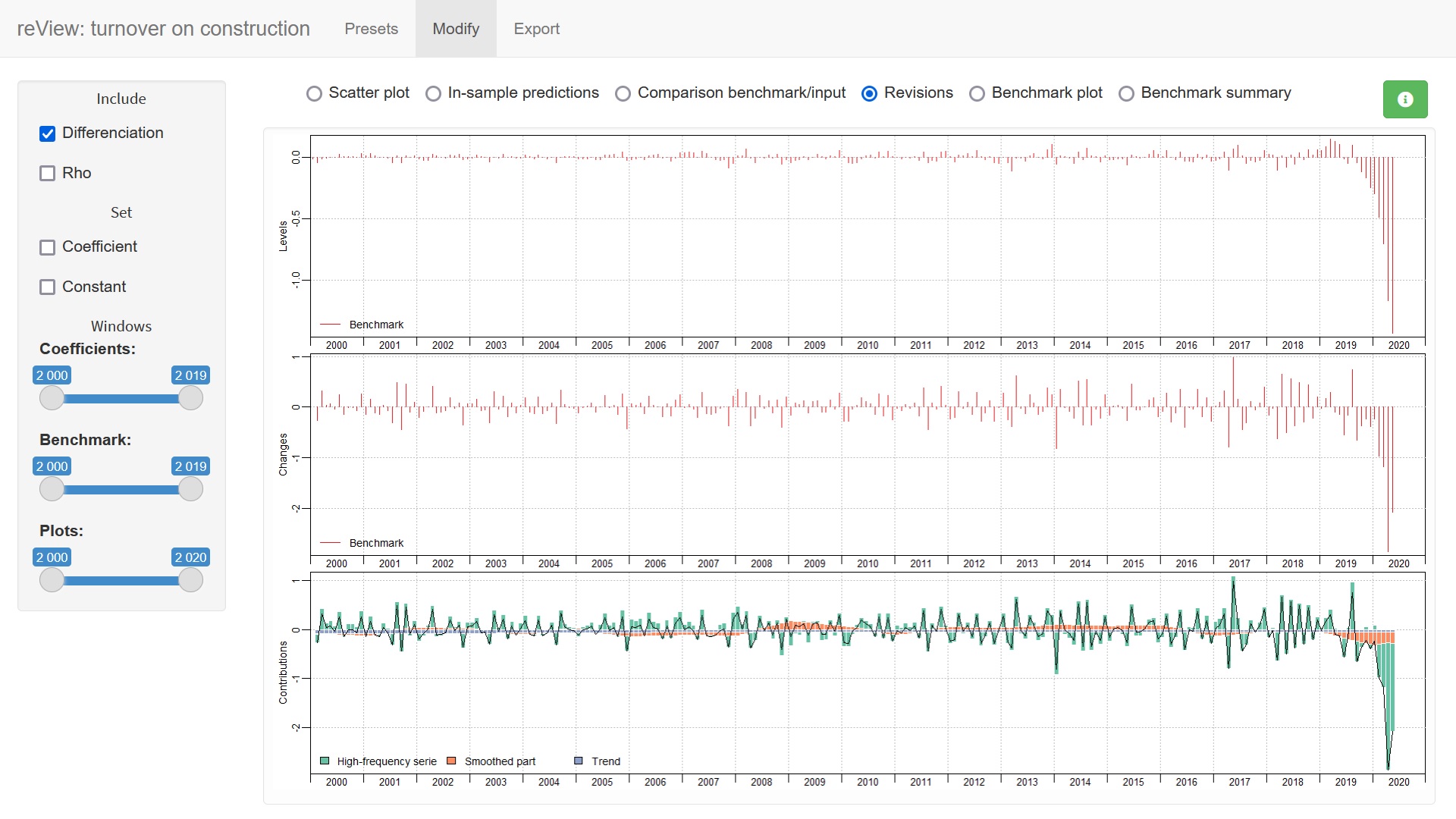Description
Two-Steps Benchmarks for Time Series Disaggregation.
Description
The twoStepsBenchmark() and threeRuleSmooth() functions allow you to disaggregate a low-frequency time series with higher frequency time series, using the French National Accounts methodology. The aggregated sum of the resulting time series is strictly equal to the low-frequency time series within the benchmarking window. Typically, the low-frequency time series is an annual one, unknown for the last year, and the high frequency one is either quarterly or monthly. See "Methodology of quarterly national accounts", Insee Méthodes N°126, by Insee (2012, ISBN:978-2-11-068613-8, <https://www.insee.fr/en/information/2579410>).
README.md
Overview
The R package disaggR is an implementation of the French Quarterly National Accounts method for temporal disaggregation of time series. twoStepsBenchmark() and threeRuleSmooth() bend a time series with another one of a lower frequency.
Installation
You can install the stable version from CRAN.
install.packages("disaggR")
You can install the development version from Github.
# install.packages("devtools")
install_github("InseeFr/disaggR")
Usage
library(disaggR)
benchmark <- twoStepsBenchmark(hfserie = turnover,
lfserie = construction,
include.differenciation = TRUE)
as.ts(benchmark)
coef(benchmark)
summary(benchmark)
plot(benchmark)
plot(in_sample(benchmark))


plot(in_disaggr(benchmark,type="changes"),
start=c(2015,1),end=c(2020,12))
plot(in_disaggr(benchmark,type="contributions"),
start=c(2015,1),end=c(2020,12))


plot(in_scatter(benchmark))
new_benchmark <- twoStepsBenchmark(hfserie = turnover,
lfserie = construction,
include.differenciation = FALSE)
plot(in_revisions(new_benchmark,
benchmark),start = c(2010,1))


Shiny app
You can also use the shiny application reView, to easily chose the best parameters for your benchmark.
reView(benchmark)
